Carnival is the time of the year when we can be a princess, somebody famous or a superhero! And, if you are looking for something even more curious, you can experience the four Italian Historical Carnivals in Ciociaria and Tuscia VT in Lazio and relive the history of 48 Italian villages and towns selected and supported by the Direzione Generale Spettacolo del Ministero della Cultura. Here are the stories of the four historical Italian Carnivals in four territories of the Lazio Region in Ciociaria and Tuscia Viterbese.
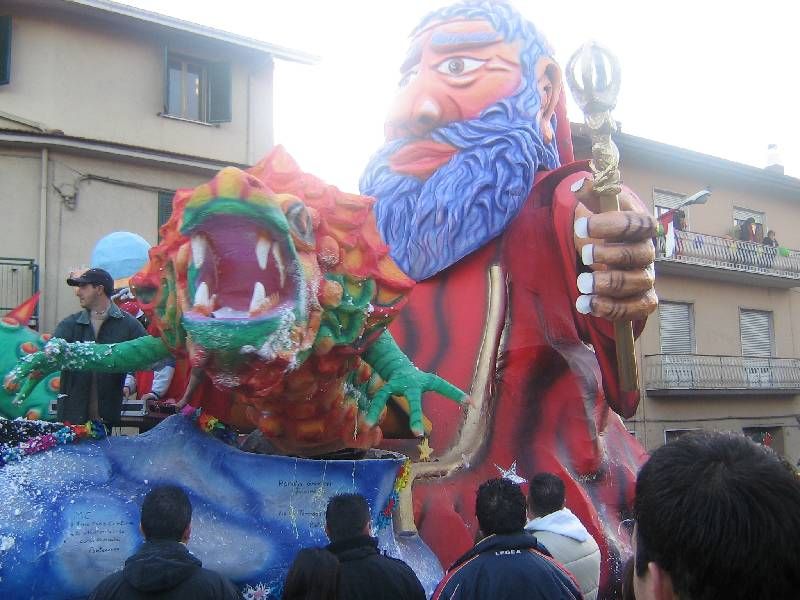
Historical Carnival of Pontecorvo – www.comunepontecorvo.fr.it
Massera me so’ fatte ‘na magnata cu ‘ sagne, la frionza i gli squagliozze, me so ‘ saziate, po’, cu ‘n’ abbuffata de pigne, tesechèlle i maritozze
This is the beginning of a popular song from the Pontecorvo Carnival in dialect rhymes. The Historical Carnival of Pontecorvo began in 1952. It is said that people from Pontecorvo bought in Naples Alicandro, a huge papier-mâché elephant, exhibited during the first allegorical parade in via XXIV Maggio.
Another allegorical character is Mazzamavere. At the Historical Carnival of Pontecorvo, the Saracens’ ascent of the Liri River is re-enacted. The inhabitants encouraged themselves by shouting “Kill the Moors”, from where Mazzamavere, the historical mask wrapped in a sheet and with the face dyed black.
In 1979 a new character brought to life the splendour of the great dancing nights from the 70s, which ended with the election of the “Queen of the Party”. During the Carnival, the Princess parades on a rickshaw, accompanied by the Court and her Majesty, the Carnival King. She was so important that the mayor handed her the keys to the town of Pontecorvo. Today at the Carnival, we also can admire the allegorical figure of Burlicchio.
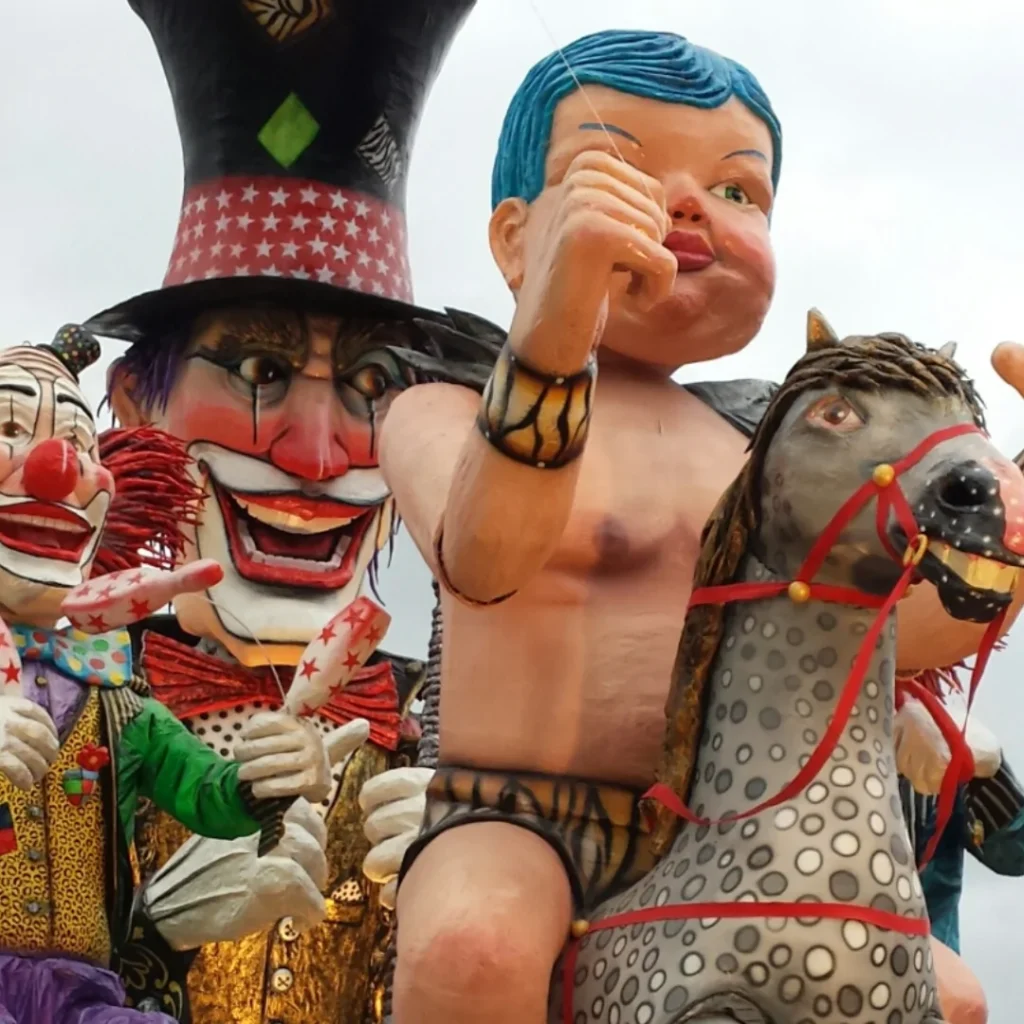
Historical Carnival of Pontecorvo
Dressed like Harlequin, with a nose Pinocchio’s nose and holding a truncheon, Burlicchio has been the official mask of the Pontecorvo Historical Carnival for about ten years. His multicoloured dress matches the typical overlapping layers of paper, which cover the allegorical floats.
The Historical Carnival of Pontecorvo 2024 takes place from February 8 to 11.
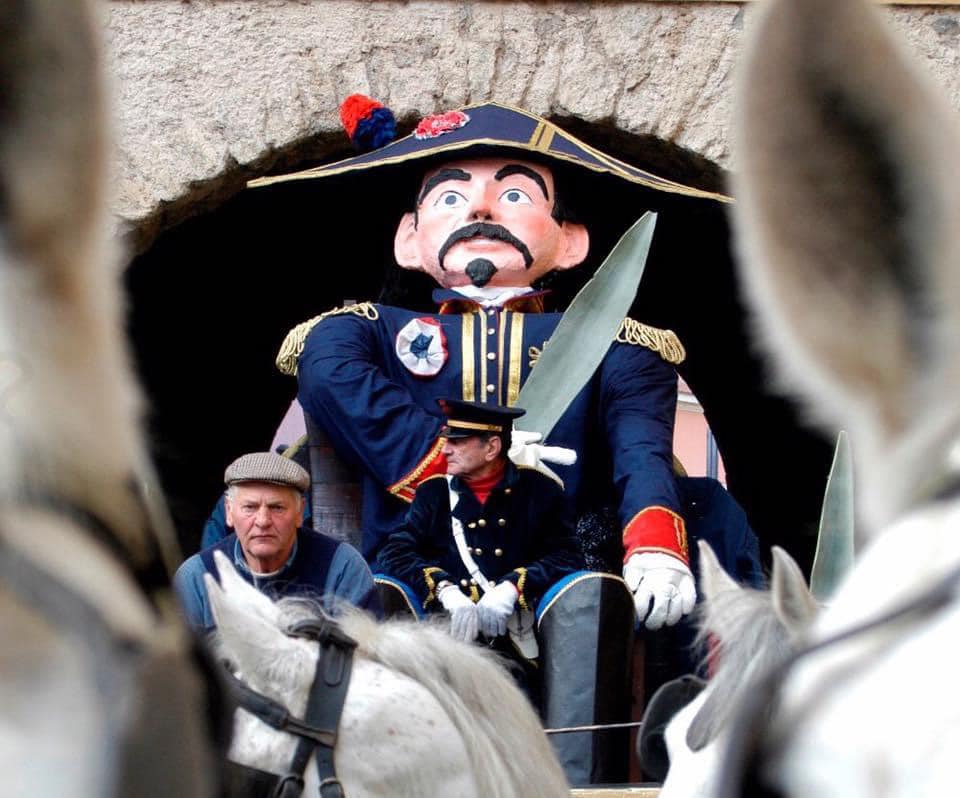
Carnevale Storico e Festa della Radeca a Frosinone – Facebook @RioneGiardino
Carnuale è ‘ne bon’ ome: / tè la faccia de galantome, uà gerenne pe’ Frusenone / pe’ magnasse gli maccarune. Nui che seme urtulane /i sapeme bene culteuà, piantereme la rauanella / viva sempre la radechella! Essegliè, essegliè, essegliè!
The song in dialect “Canzone de Carnuale” is about the Radeca Festival, the climax of Frosinone Historical Carnival. Over the centuries, a parade of allegorical floats and a procession in costume have joined the more traditional festival.
The Historical Carnival of Frosinone begins on the Sunday before Shrove Thursday. The radeca, a green agave leaf, is delivered to the mayor, who shows it to the town people from the height of the Bell Tower. The highlight is the Radeca Festival on Shrove Tuesday, when the Carnival ends and the people perform the playful ritual of the radeca, touching the agave with their head as a wish for prosperity. The origins of the festival date to the ancient rites of fertility and purification, the end and beginning of a cycle that culminates with the burning of the Carnival King, General Championnet.
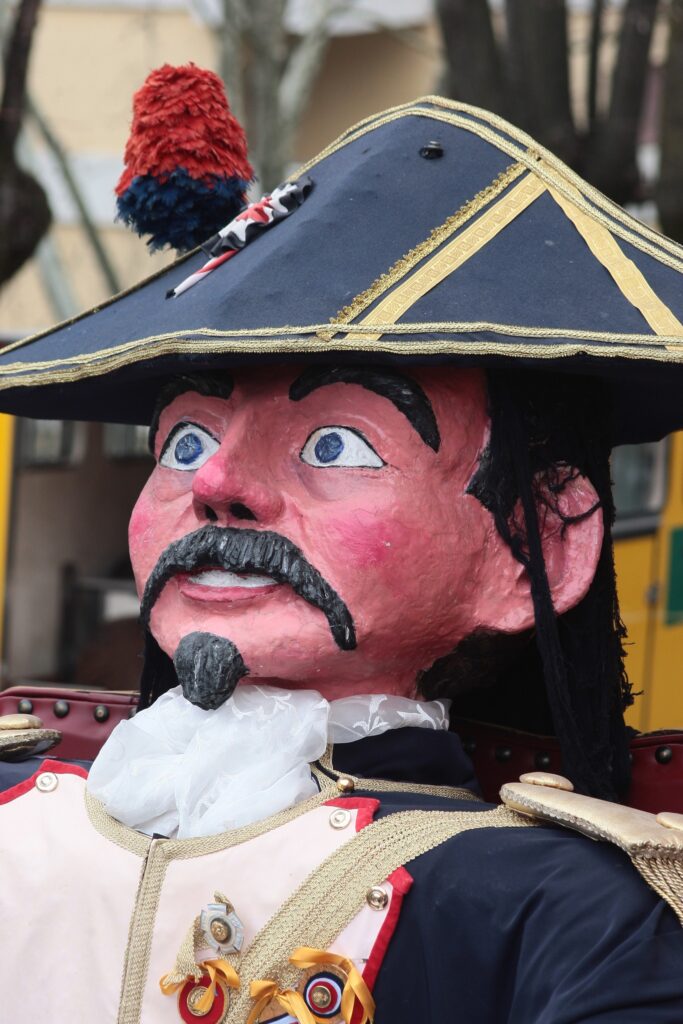
Frosinone Historical Carnival and Radeca Festival – Facebook @RioneGiardino
This puppet represents the French General Championnet, head of the French gendarmes governing the territory. The Radeca Festival in Frosinone recalls the history of the French invasion in the Napoleonic period, the heroic rebellion of the people from Frosinone against the French troops between 1798 and 1799, and the trial of the French General Jean Antoine Etienne Vachier, known as Championnet. The re-enactment of this historical event is therefore intertwined with the propitiatory rite.

The fini fini in offal sauce
The General attended the Frosinone Carnival celebrations and tasted the fini fini, the maccheroni in offal sauce from Ciociaria. Since then, the Radeca Festival begins after the Shrove Tuesday lunch based on maccarune. The procession starts from Rione Giardino with the big papier-mâché puppet representing Championnet. Satisfied and drunk, he is carried in triumph on a float pulled by four horses with a barrel of wine, followed by a parade of Radicari who, after drinking fine and red wines, dance the Saltarello, raising the agave to the sky to the rhythm of the “Canzone de Carnuale”. In the end, the representatives of the Municipality parade with the town banner and the musical band, followed by the float of General Championnet. Floats from other towns in Ciociaria join the parade.
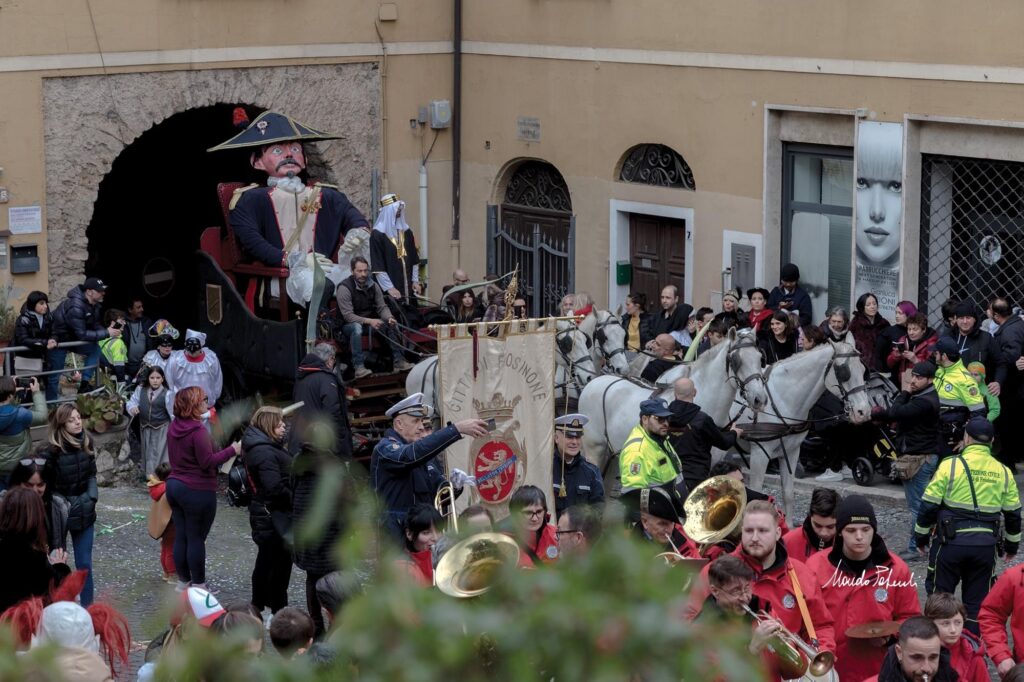
Historical Carnival of Frosinone and Radeca Festival – Pro Loco Frosinone
The agave leaf must be brandished by the participants to chase the evil away, represented by the puppet. After a mock trial, the General is condemned to death by the Notary and burned in the Rione Giardino. After the reading of the General’s will, the fini fini are eaten and, finally, the keys of the town of Frosinone are returned to the mayor. The Historical Carnival of Frosinone 2024 takes place from February 4 to 13.
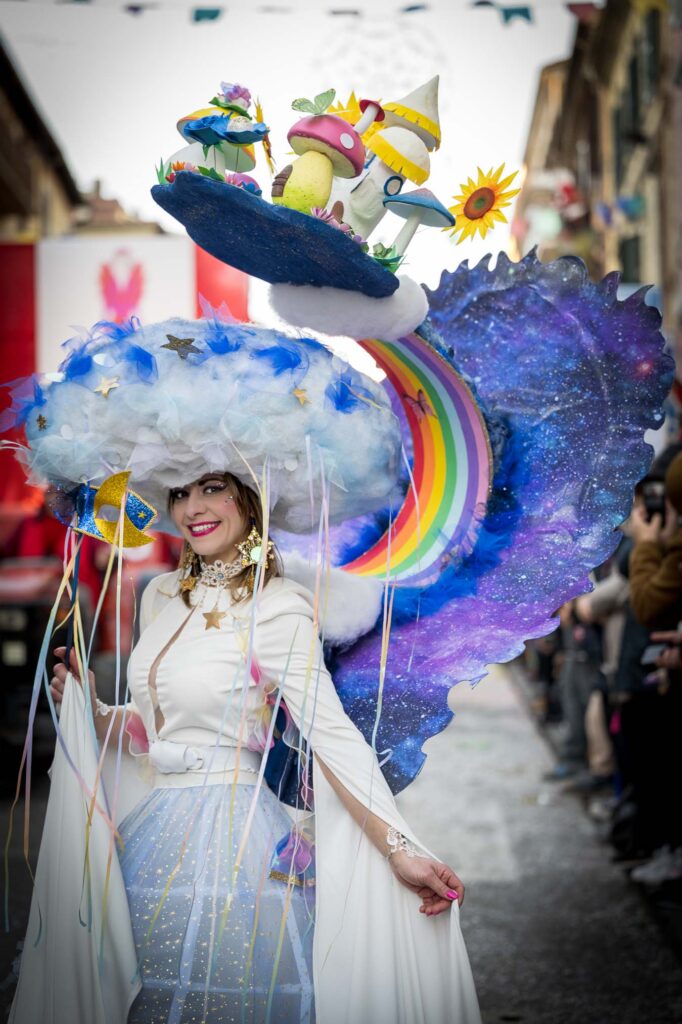
Historic Carnival of Ronciglione – foto di Domenico Mancini
We reach the Tuscia Viterbese, where the Historical Carnival of Ronciglione is celebrated, one of the oldest and among the top ten carnivals in all of Italy. Many traditional events take place in Ronciglione at the great Corso di Gala, such as the Parades of the Hussars and the Red Noses.
The Ronciglione Carnival officially begins on Shrove Thursday with the sound of the bell above the Town Hall announcing the arrival of the Carnival King. The mayor delivers to him the keys of the town of Ronciglione. The ceremony continues with the parade of allegorical floats, majorettes, masked groups, children, and dancers of the typical Saltarello, accompanied by the historical music band “Alceo Cantiani”, born in 1835.

Parade of the Hussars at the Historical Carnival of Ronciglione
The Historical Carnival of Ronciglione has its roots in the traditional Renaissance and Baroque Roman Carnival. The Hussars’ parade, in fact, recalls the Berber horse race, one of the key moments of the Roman Carnival. According to legend, a French Hussar Captain came to Ronciglione with his army, in defense of the Papal State. He fell in love with a beautiful lady from Ronciglione and courted her by parading several times during the Carnival at the head of a group of soldiers on horseback.

Red Noses at the Historic Carnival of Ronciglione
The Historical Red Nose Parade takes place on Shrove Monday. Ancient local masks sing a hymn to wine and offer everyone excellent rigatoni with sauce, served in picturesque terracotta chamber pots. It is said that in 1900 a tipsy man from Ronciglione fell asleep on a dish of rigatoni al ragù and woke up with his face in a chamber pot and his nose red, dirty with ragù. Since then, the Red Noses have become one of the typical masks of the town of Ronciglione. Since the 70s, Monday is dedicated to food and wine and to the parades of Polentari, Tripparoli, Faciolari, Fregnacciari and Sarakari carrying the saraca, a fragrant dried herring hanging from a cane.
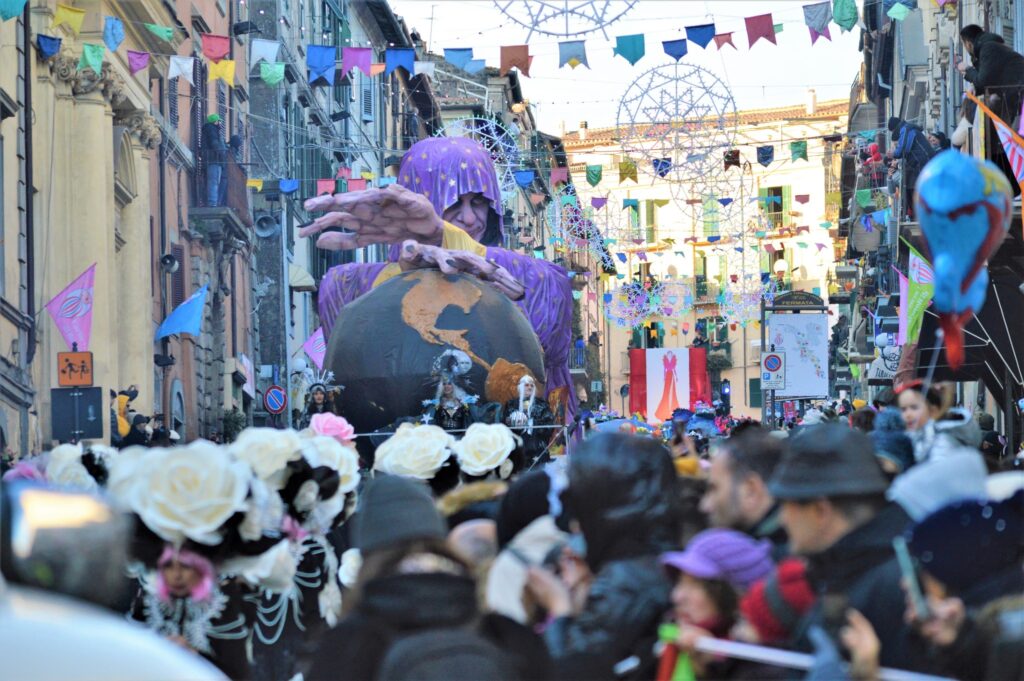
Historical Carnival of Ronciglione
The rich programme of events culminates on Shrove Monday, with the representation of the Death of King Carnival and the opening of his will. The funeral procession with the traditional torchlights is accompanied by the Company of the Penitents, the widows of King Carnival and Death walking on stilts, dressed in black and with a scythe in his hand. The “Compagnia della Buona Morte”, founded in 2016, also accompanies the Funeral of King Carnival with the task of transporting the aerostatic baloon. The Historical Carnival of Ronciglione 2024 takes place from January 28 to February 13.
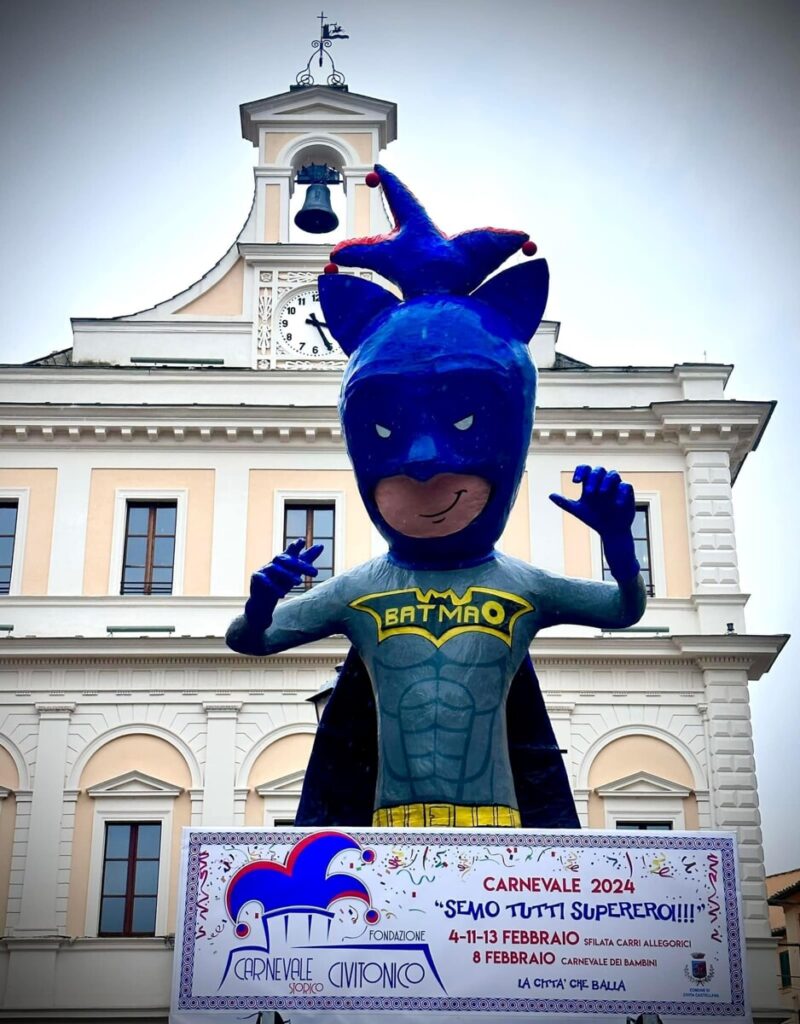
O’ Puccio, a character of the Civita Castellana Historical Carnival 2024
BatMao is ‘o Puccio of the Historical Carnival of Civita Castellana 2024. With the cry “We are all superheroes!”, the papier-mâché puppet is celebrated as the Carnival King, who changes every year and is officially invested during the feast of Sant’Antonio Abate on January 17.
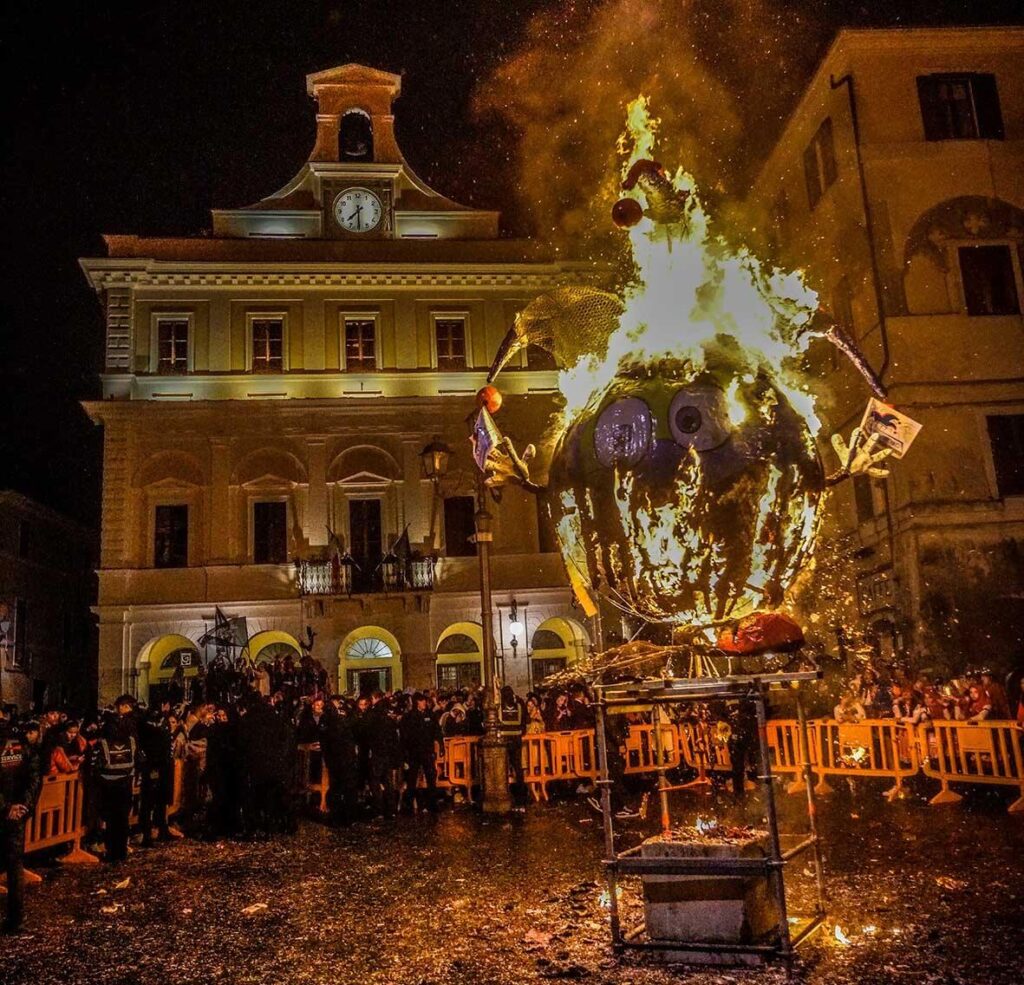
Burning of ‘O Puccio at the Civitonico Historical Carnival – www.carnevalestoricocivitonico.it
The Civitonico Carnival, born in 1566, celebrates O’ Puccio, a figure of fantasy who lives in revelry and recklessness. Already in 1800, people were writing about the Rogo del Puccio. The King of Carnival dies and is cremated on Shrove Tuesday, putting an end to the madness and excesses of the Civita Castellana Carnival.

The Frittelloni of Civita Castellana
While burning the Carnival King, O’ Puccio, everyone gorges on fritters. The Frittellone is a very thin omelette, rolled up and sprinkled with pecorino cheese. A true symbol of the Civitonica culinary tradition.
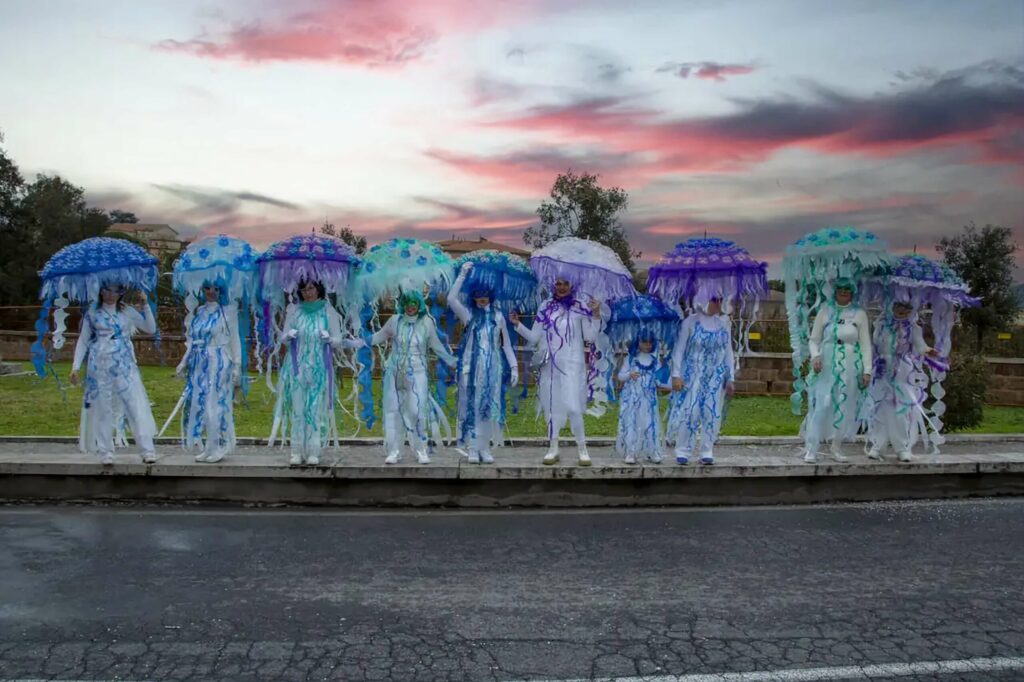
The Jellyfish at the Civitonico Historical Carnival – www.carnevalestoricocivitonico.it
As a corollary to the Civitonico Historical Carnival, the bizarre band “La Rustica” transforms the most extravagant objects into musical instruments. The masked groups compete parading on floats in front of a jury of experts. Each allegorical float is a work of art, created by local teams of papier-mâché masters and mechanics. Alongside the floats, the masks march eager to become the best of the year. The extremely creative costumes are sewn with great commitment by local tailors. The Historical Carnival of Civita Castellana 2024 takes place on February 4, 8, 11 and 13.
